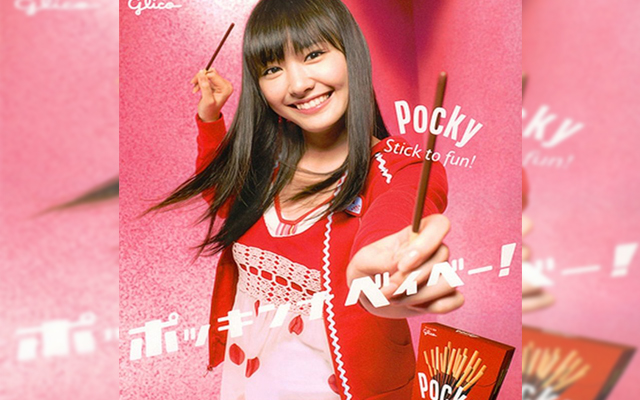Related Article
-

This Duck Swimming Through A Sakura-Covered River Is Your Zen Moment Of The Day
-

Creative Neighbor Uses Photoshop Skills To Turn Tree Into Japan’s Most Iconic Kaijū
-

The Flying Carp of Japan: Recommended places in 2020 and the Importance of Koi Nobori and Kanzarashi
-

Samurai Portraits Of Marvel Super Heroes Using Japanese Ink Painting
-

Japan’s Famously Loyal Dog Hachiko Is Getting His Own Line Of Chocolate
-

The Force Bridges Traditional And Casual With Star Wars Themed Japanese Summer Wear



Sushi, Ramen, Tempura, Udon, Tonkatsu, Gyu-don, Okonomiyaki, Sukiyaki…Japanese food, “washoku”, has been registered as a UNESCO Intangible Cultural Heritage in 2013 and seems its popularity has keep growing all over the world. But! Only cuisine is not “Japanese food”! Sweets are also something that Japanese food is proud of! There are various kinds of sweets available at Conbini (convenience store), supermarket…or even at vending machine at some stations! Here we introduce you 5 most popular sweets you should definitely try! We only picked modern sweets, not traditional one!
1. Black Thunder
Once you know the taste, you’ll be addicted to it! Black Thunder is a crispy chocolate candy bar that is popular with teenagers in Japan right now. At the amazingly cheap price of 32 yen, it can be found at supermarkets and convenience stores throughout the country.
For its size, Black Thunder feels a bit heavy in the hand, which is to be expected of something made of chocolate but it’s also very sweet. Black Thunder is especially popular among Japanese school girls.
2. Kit Kat
You might thought “It’s not Japanese sweets, it's an American one!”. Yes, you’re right. However, in the meaning of it’s variety of flavor, Japan must be #1 unique country for it!
Matcha
Wasabi
Look at this! So unique and unusual taste…! No other country has as many Kit Kat flavors as Japan does!
It is said Japan has released over 200 flavors. There are lots of local flavor Kit Kat, for example, Wasabi flavor from Shizuoka and Maccha (green tea) flavor from Kyoto!
3. Kinoko no Yama / Takenoko no Sato
Kinoko no Yama is chocolate candy made in the shape of little mushrooms (Kinoko means “mushroom” and yama means “mountain”). The stem part of Kinoko no Yama is made of a biscuit. Takenoko no Sato is also chocolates shaped like bamboo sprouts (Takenoko means “bamboo” and Sato means “home” or “village”).
As you can see from the picture, Kinoko no Yama tastes a little bit lighter than Takenoko no Sato, as it has less cookie part. Takenoko no Sato feels heavier compared to Kinoko no Yama, so you can feel better satisfaction of “eating candies” than Kinoko no Yama, although it has less chocolate part.
Among Japanese people, it has been debate over which is supreme ; “Kinoko no Yama” or “Takenoko no Sato”. Me? I’m definitely “Takenoko no Sato” person! This small war ended up making a lot of video that the both candies are literally fighting! The video linked below is one of the well made works.
4. Pocky
Pocky is chocolate-coated biscuit sticks and long-selling candy since it’s debut in 1966. In Europe, Pocky is known as “MIKADO”. Mikado has been manufactured under license from Pocky’s original company, Ezaki Glico. Pocky is coated with chocolate but it’s not too sweet, very crunchy, and light. Overall it’s very easy to eat and many people get addicted to it!
As the straight stick looks like the number “1”, people call November 11th (11/11) as “Pocky day”. Many boys and girls post selfie with pocky or “pocky game” pictures/videos, which means 2 people bite each end of the pocky and eat towards each other…! (You’ll see what I mean)
5. Hi-Chew
Hi-Chew is soft chewable candies with fruits flavors. It’s much softer and chewy compared to Western candy, and taste so fresh and smells good as each candy is wrapped with foil paper, not wax paper.
As Hi-Chew is one of the popular candies in Japan, it also has various local flavor along with Kit Kat, for example, Shikuwasa from Okinawa and Yubari Melon from Hokkaido. According to the official website, there are 150 different flavors existing so far!
Shekwasha
Yubari Melon
Now Hi-Chew goes overseas as well; it is on sale in USA, New Zealand, Shanghai, and Taiwan.
Hi-Chew in Taiwan
Those candies might be available at Japanese glossary shops in your country, but I’m sure that they won’t have much variation in taste! If you have chance to visit Japan, go to the Conbini/supermarket and try unique taste!
Tokyo Girls' Update
http://tokyogirlsupdate.com